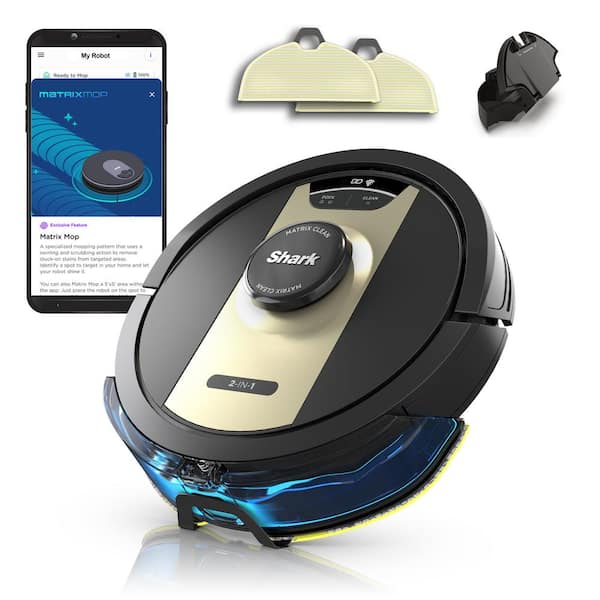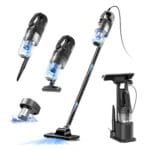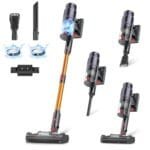Smart vacuums are changing how we clean our homes. Two popular types are laser navigation and camera navigation models.
Choosing between these smart vacuums can be tough. Laser navigation uses precise mapping, while camera navigation relies on visual data. Understanding their differences helps you decide which fits your needs best. In this comparison, we will explore the advantages and drawbacks of both technologies.
This guide will help you make an informed choice, ensuring your smart vacuum investment is worthwhile. Let’s dive in and see what each has to offer!
Laser Navigation
Laser navigation in smart vacuums offers precise mapping, enhancing cleaning efficiency. Compared to camera navigation, it excels in accuracy and performance.
### Laser NavigationSmart vacuums with laser navigation are becoming increasingly popular. They use advanced technology to map your home accurately. This ensures efficient and thorough cleaning.How It Works
Laser navigation uses LIDAR (Light Detection and Ranging). A laser sensor emits light to measure distances. It creates a detailed map of your home, identifying obstacles and open spaces.The vacuum can navigate complex layouts. It can clean multiple rooms without getting lost. This technology ensures no spot is missed.Advantages
Laser navigation offers precise mapping. It works well in low light conditions. Your vacuum can clean effectively even at night.This technology saves time. The vacuum plans the most efficient route. It avoids obstacles and minimizes redundant movements.Laser navigation is reliable. It provides consistent performance. Your home gets cleaned thoroughly each time.Limitations
Laser navigation can be expensive. Smart vacuums with this feature usually cost more. Budget-conscious buyers may find this a drawback.The sensors can be sensitive. They might require occasional maintenance. Dust and dirt can affect their accuracy.Think about your needs before choosing laser navigation. Is the cost worth the precision and efficiency? Consider your cleaning habits and home layout.
Credit: www.homedepot.com
Camera Navigation
Smart vacuums using camera navigation offer real-time mapping and object recognition. They adapt quickly to changes in the environment. This makes them efficient for dynamic spaces.
Camera navigation is a popular technology in smart vacuums, offering an alternative to laser navigation. Many users find it particularly appealing due to its ability to visually interpret and adapt to its surroundings. Let’s dive into how camera navigation works, its advantages, and limitations.How It Works
Smart vacuums with camera navigation use one or more cameras to capture images of their environment. These images are processed to recognize objects, walls, and obstacles.This technology allows the vacuum to create a map of your home. The vacuum can then use this map to navigate efficiently.It can even detect changes in the environment. For instance, if you move furniture, the vacuum adjusts its path accordingly.Advantages
One of the main advantages of camera navigation is its ability to recognize and avoid obstacles. This reduces the chances of the vacuum getting stuck.It can also handle complex environments better. Your vacuum can navigate around chair legs and under tables without much trouble.Camera navigation can be more effective in low-light conditions. This is because it relies on visual data rather than light reflection.Limitations
However, there are limitations. Camera navigation requires good lighting to function optimally. In dim environments, its effectiveness can decrease.It can also be more prone to errors in recognizing objects. Sometimes, small or thin objects like cables may be misinterpreted.Moreover, the processing power needed for image recognition can drain the battery faster. This might reduce the vacuum’s operational time.Do you think the benefits outweigh the drawbacks? Your home’s layout and lighting conditions could be the deciding factors.Performance Comparison
When it comes to smart vacuums, the technology behind their navigation can greatly affect performance. Laser navigation and camera navigation each bring unique strengths and weaknesses to the table. Let’s dive into a comparison of their performance, focusing on accuracy, efficiency, and adaptability.
Accuracy
Accuracy in navigation is crucial for smart vacuums to clean your home effectively. Laser navigation uses precise laser distance sensors to map your home. This ensures the vacuum knows exactly where it has been and where it needs to go. It’s particularly good at avoiding obstacles and navigating tight spaces.
On the other hand, camera navigation relies on visual cues. This can sometimes result in the vacuum missing spots if the lighting is poor or if there are numerous small objects around. However, it can recognize furniture and other structures, adapting its path dynamically.
Efficiency
Efficiency determines how fast and thoroughly your vacuum cleans. Laser navigation typically leads to a quicker cleaning process. The vacuum plans an optimal path, reducing the time spent cleaning and ensuring no area is missed.
Camera navigation can be less efficient, as it may need to reorient itself frequently. This can lead to a slightly longer cleaning time. However, it can be more thorough in identifying and cleaning around obstacles, as it can “see” and understand the environment.
Adaptability
Adaptability is the vacuum’s ability to handle changes in your home environment. Laser navigation is highly adaptable to different floor types and can easily adjust to new layouts. It can quickly update its map when furniture is moved.
Camera navigation also adapts well but in a different way. It excels in recognizing and adapting to new obstacles that might appear. For instance, if you leave shoes in the hallway, a camera-navigated vacuum can detect and clean around them more effectively than a laser-navigated one.
When choosing between laser and camera navigation, think about what matters most to you. Do you value precise and quick cleaning? Or do you need a vacuum that can handle a dynamic and cluttered environment? Your answer will guide you to the best choice for your home.

Credit: www.therobotreport.com
User Experience
Understanding the user experience of smart vacuums is crucial. It helps in making an informed decision between laser navigation and camera navigation models. Both types offer unique benefits. Let’s explore how they compare in terms of ease of use, learning curve, and maintenance.
Ease Of Use
Laser navigation vacuums usually map your home precisely. They avoid obstacles efficiently. This makes them easy to use. You set them up once, and they remember the layout. Camera navigation vacuums use visual data to navigate. They can recognize items and adapt to changes. Some users find this feature very helpful.
Learning Curve
Laser navigation vacuums often have a shorter learning curve. They come with clear instructions. You can get them running quickly. Camera navigation models may require more time to set up. They might need adjustment to lighting conditions. This can make the initial setup longer.
Maintenance
Maintaining a laser navigation vacuum is generally straightforward. They have fewer moving parts. Regularly empty the dustbin and clean the sensors. Camera navigation vacuums might need more frequent maintenance. Their cameras must be kept clean for optimal performance. Dust and smudges can affect their ability to navigate.
Cost Analysis
Smart vacuums are a valuable addition to any modern home, but understanding the cost implications is crucial before making a purchase. Comparing laser navigation and camera navigation technologies can help you decide which option offers better value for your money. Let’s break down the costs associated with each type.
Initial Investment
When you first buy a smart vacuum, you’ll notice a significant difference in price between laser navigation models and camera navigation models.
Laser navigation vacuums tend to be pricier. The advanced technology used for mapping your home precisely comes at a premium. You’re paying for accuracy and efficiency.
Camera navigation vacuums are generally more affordable. They utilize cameras to navigate, which is less expensive to produce. However, the trade-off is often less precision.
Long-term Value
Think about the long-term value of your smart vacuum investment. It’s not just about the initial cost but how much you’ll spend over time.
Laser navigation vacuums can save you money on maintenance. Their precise mapping reduces the risk of bumping into objects and getting damaged.
Camera navigation vacuums might require more frequent repairs. Their less accurate navigation can lead to collisions and wear and tear faster.
Consider the lifespan of each model. Laser navigation vacuums often last longer due to their durability and efficient cleaning patterns.
Before you decide, ask yourself: Is it worth spending more upfront for a laser navigation vacuum if it saves you money and hassle in the long run?
Ultimately, your choice should align with your budget and your home’s specific needs.

Credit: lubluelu.com
Market Trends
In recent years, the market for smart vacuums has seen significant growth. As technology advances, consumers are faced with a choice between laser navigation and camera navigation. Understanding the market trends can help you make an informed decision. Let’s dive into the details.
Popular Models
Laser navigation vacuums, like the iRobot Roomba i7+, have been gaining traction. They map your home accurately and work efficiently in low-light conditions. On the other hand, camera navigation vacuums such as the Roborock S6 MaxV use advanced visual recognition to avoid obstacles.
Both types offer unique features that cater to different needs. Some consumers prefer the precision of laser navigation. Others appreciate the advanced obstacle detection of camera navigation. Each has its strengths and weaknesses.
Consumer Preferences
Consumer preferences often hinge on specific needs. Do you have a pet? You might prefer a camera navigation vacuum that can identify and avoid pet waste. Live in a large home? A laser navigation vacuum could be the better choice for its mapping accuracy.
Price also plays a crucial role in consumer choices. Laser navigation models are generally more expensive. However, the investment might be worth it for the added efficiency and precision. Camera navigation vacuums tend to be more budget-friendly, offering a balance between cost and functionality.
Think about what’s most important to you in a vacuum. Is it the ability to clean in low light? The precision of mapping? Or perhaps the cost? Your answers will guide you to the best choice for your home.
What features do you prioritize in a smart vacuum? Share your thoughts below!
Frequently Asked Questions
What Is The Difference Between Lidar Navigation And Laser Navigation?
LiDAR navigation uses light detection and ranging for mapping and obstacle detection. Laser navigation uses laser beams for distance measurement and positioning.
Which Is Better Gyro Navigation Or Lidar?
Gyro navigation is better for stable orientation over time. LiDAR excels in real-time object detection and mapping. Choose based on your specific needs.
What Are The Different Types Of Navigation In Robot Vacuum?
Robot vacuums use various navigation types: random navigation, gyroscope navigation, camera-based navigation, and laser-based navigation (LIDAR). Each type offers different levels of efficiency and mapping accuracy.
What Is The Difference Between Lidar And Laser Camera?
LiDAR uses light detection and ranging to measure distances. Laser cameras capture images using laser illumination. LiDAR creates detailed 3D maps, while laser cameras focus on high-resolution imaging.
Conclusion
Choosing between laser navigation and camera navigation depends on your needs. Laser navigation offers precise mapping and efficiency. Camera navigation provides adaptability and real-time obstacle detection. Both technologies have unique benefits. Consider your home layout and cleaning requirements. This will help you make an informed choice.
Investing in the right smart vacuum can save you time and effort. Happy cleaning!





